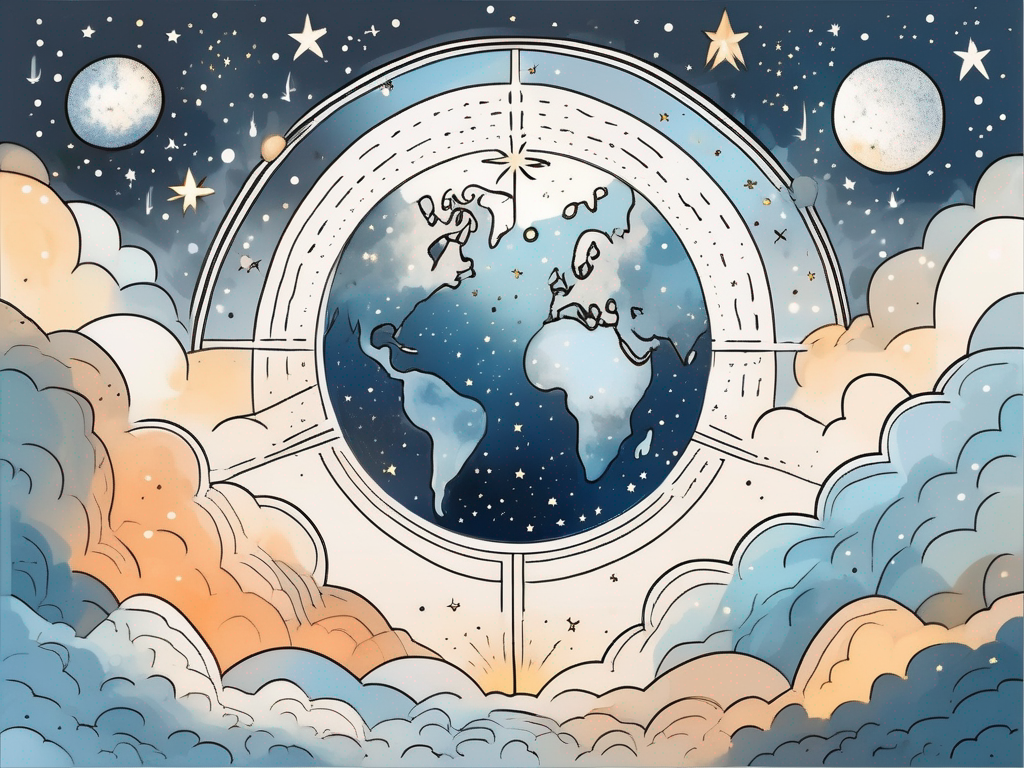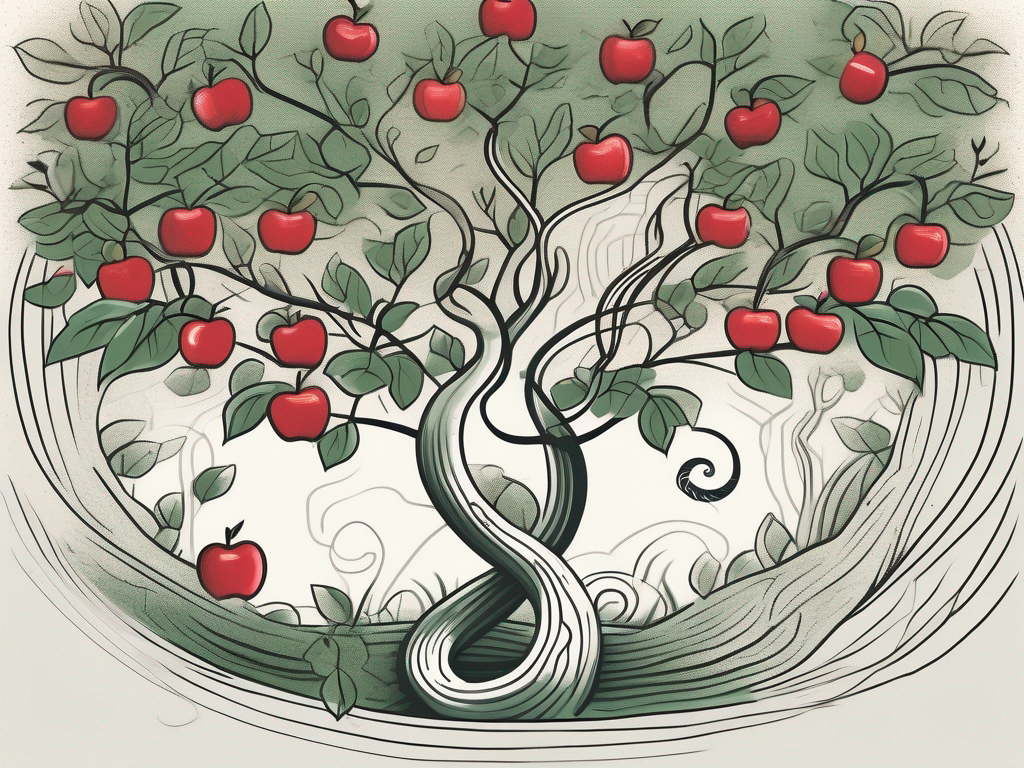In the book of Genesis, the Tower of Babel is a fascinating tale that has intrigued scholars and theologians for centuries. This story recounts a moment in human history when language became confused, leading to the birth of multiple languages and affecting the course of humanity. In this article, we will dive deep into the biblical account of the Tower of Babel, explore its significance in ancient culture, examine theological interpretations, and discuss its relevance in modern times.
Understanding the Tower of Babel Narrative
Before we delve into the details, let’s familiarize ourselves with the biblical account of the Tower of Babel. According to Genesis 11:1-9, a group of people came together to build a tower that would reach the heavens. Their objective was to make a name for themselves and prevent their dispersion across the earth.
This grandiose plan was met with divine intervention. God saw their pride and decided to confuse their language, causing communication breakdown among the people. As a result, they were unable to understand each other and abandoned their tower-building project. They scattered across the earth, forming different nations and speaking different languages.
The Biblical Account of the Tower of Babel
The story of the Tower of Babel holds a prominent place in the book of Genesis. It serves as a cautionary tale about the consequences of human pride and the divine authority over human endeavors. The tower’s construction symbolized humanity’s attempt to reach the divine realm and establish their own power, disdaining their dependency on God.
The confusion of languages was a divine intervention to prevent further acts of rebellion. By dividing the people through language, God sought to humble them and remind them of their limitations as mortal beings. The dispersion that followed the confusion of languages also fulfilled God’s command to fill the earth.
The Significance of the Tower in Ancient Culture
The story of the Tower of Babel holds cultural significance beyond its biblical interpretation. In ancient Mesopotamian societies, monumental towers known as ziggurats were constructed to honor the gods. These towering structures were considered gateways to heaven and were used as a means to communicate with the divine realm. The biblical account of the Tower of Babel may have drawn inspiration from these cultural practices.
The significance of the tower in ancient culture lies in its association with human ambition and the desire to bridge the gap between humanity and divinity. It serves as a cautionary tale about the limitations and consequences of human pride.
Furthermore, the construction of ziggurats in ancient Mesopotamia was a complex and arduous process. These massive structures were built using mud bricks, which were then reinforced with layers of reeds and bitumen. The ziggurats were often multi-tiered, with each level representing a different deity or aspect of the divine realm.
The construction of ziggurats required the labor of thousands of workers, who toiled under the scorching sun to bring these monumental structures to life. The planning and execution of such projects required meticulous engineering skills and a deep understanding of architectural principles.
Once completed, the ziggurats served as focal points for religious rituals and ceremonies. They were believed to be the physical manifestations of the gods on earth, and priests would ascend the ziggurat’s steps to communicate with the divine. These interactions were seen as crucial for maintaining harmony between the human and divine realms.
It is fascinating to consider the parallels between the ziggurats of ancient Mesopotamia and the Tower of Babel in the biblical narrative. Both structures represented humanity’s desire to connect with the divine, albeit in different ways. While the ziggurats were intended as gateways to heaven, the Tower of Babel was an attempt to reach the heavens directly.
However, the divine intervention in the Tower of Babel story serves as a stark reminder of the limitations of human ambition. It highlights the importance of humility and recognizing our place in the grand scheme of things. The confusion of languages and the subsequent dispersion of people across the earth were divine measures to prevent further acts of rebellion and remind humanity of their mortal nature.
In conclusion, the Tower of Babel narrative is a powerful story that resonates with both biblical and cultural contexts. It serves as a cautionary tale about the consequences of human pride and the divine authority over human endeavors. The story also sheds light on the significance of monumental structures in ancient Mesopotamian societies and their role in bridging the gap between humanity and the divine.
The Language Confusion: A Divine Intervention
The confusion of languages at the Tower of Babel had far-reaching implications for humanity. Let’s explore how this divine intervention birthed multiple languages and impacted human history.
The Birth of Multiple Languages
Language is a powerful tool that enables communication and the transmission of knowledge. When the languages were confused, the people were no longer able to understand one another, leading to the birth of numerous distinct languages.
Imagine the scene at the Tower of Babel, where people from different backgrounds and regions gathered to build a tower that would reach the heavens. They spoke a common language, united in their purpose and ambition. However, their collective efforts were met with divine intervention.
As the tower grew taller, a sense of pride and arrogance began to take hold. In response, the divine forces decided to intervene, scattering the people and confusing their language. Suddenly, the once harmonious construction site turned into a chaotic scene of confusion.
People were left bewildered as they found themselves unable to comprehend the words spoken by their fellow builders. The once unified workforce became fragmented, with each group forming its own distinct language to communicate within their newly formed communities.
This language division created barriers and contributed to the cultural and geographical diversity we observe today. The world became a tapestry of languages, each representing a unique heritage and identity.
The Impact of Language Division on Humanity
The division of languages had a profound impact on humanity’s development. It led to the formation of distinct ethnic groups, each with its own language and culture.
Across the globe, languages evolved independently, influenced by the geography, climate, and social dynamics of each region. From the tonal languages of East Asia to the complex grammatical structures of indigenous languages, the diversity of human languages is a testament to the adaptability and creativity of our species.
This linguistic diversity has enriched human society, allowing for different perspectives, ideas, and traditions to flourish. It has given rise to a myriad of literature, poetry, and oral traditions that capture the essence of various cultures.
However, the division of languages has also posed challenges to communication and understanding among different groups. Language barriers can hinder cooperation, create misunderstandings, and even lead to conflicts.
Throughout history, we have witnessed instances where language differences have fueled tensions between nations, impeding diplomacy and hindering progress. Misinterpretations and miscommunications have often been the root cause of conflicts that could have been resolved through effective dialogue.
Therefore, it is essential to emphasize the importance of bridging these gaps and finding common ground amidst linguistic diversity. Language learning and translation services play a crucial role in fostering understanding and facilitating global cooperation.
By embracing multilingualism and promoting language education, we can break down the barriers that language division has erected. Through open dialogue and cultural exchange, we can celebrate our differences while finding unity in our shared humanity.
Theological Interpretations of the Tower of Babel Story
The Tower of Babel story has been interpreted in various theological ways, illustrating different aspects of human nature and the divine plan.
The Punishment for Human Pride
One interpretation sees the confusion of languages as a divine punishment for human pride and arrogance. The people’s desire to build a tower to reach the heavens symbolized their rebellion against God’s authority. The language confusion served as a humbling reminder that human achievements should not be divorced from their dependence on the divine.
When examining this interpretation, it is important to consider the historical context in which the story was written. The ancient Mesopotamians, who likely originated this narrative, believed in the existence of multiple gods and sought to build towering ziggurats as a means to connect with the divine. The Tower of Babel, therefore, can be seen as a cautionary tale against human hubris and the dangers of attempting to elevate oneself to the level of the gods.
Furthermore, the confusion of languages can be seen as a way for God to restore order and prevent the people from further challenging His authority. By scattering them across the earth and giving them different languages, God ensured that they would be unable to communicate effectively and collaborate on such ambitious projects. This interpretation serves as a reminder of the importance of humility and recognizing our place in the grand scheme of things.
The Importance of Diversity and Unity in Christianity
Another interpretation highlights the importance of diversity and unity in Christianity. While the Tower of Babel narrative depicts the division of languages, the Bible later emphasizes the unifying power of the Holy Spirit. The Day of Pentecost, described in the New Testament, is seen as a reversal of the language confusion, as the Holy Spirit enabled people of different languages to understand one another. This event emphasizes the importance of unity amidst diversity.
Within the Christian faith, diversity is seen as a reflection of God’s creativity and the beauty of His creation. Each individual, regardless of their language or cultural background, is seen as a unique and valuable part of the body of Christ. The Tower of Babel story, therefore, serves as a reminder that while diversity may lead to differences and misunderstandings, unity can be achieved through the power of the Holy Spirit.
Furthermore, this interpretation highlights the importance of embracing diversity within the Church. Just as the Holy Spirit enabled people of different languages to understand one another, Christians are called to break down barriers and build bridges of understanding and love across cultural and linguistic divides. This interpretation challenges believers to actively seek unity amidst diversity and to celebrate the richness that different perspectives and experiences bring to the faith.
The Tower of Babel in Modern Context
Despite being an ancient story, the Tower of Babel continues to resonate in modern times, offering insights into language, culture, and globalization.
Linguistic Evolution and the Tower of Babel
From the confusion of languages at the Tower of Babel, languages evolved and diversified over time. Linguistic evolution is an ongoing process, influenced by various factors such as migration, cultural interaction, and technological advancements. Exploring the origins and development of languages can provide valuable insights into human history, migration patterns, and cultural exchange.
The Tower of Babel and Globalization
Globalization has brought people from diverse linguistic backgrounds closer together. As we navigate a globalized world, language and communication play crucial roles in fostering understanding and cooperation. The Tower of Babel story serves as a reminder that although language differences may create challenges, they also present opportunities for cultural exchange, learning, and the appreciation of diversity.
Unraveling the Mystery: The Tower of Babel and Language Confusion
The Tower of Babel story offers profound insights into the role of language in human connection and the power of words.
The Role of Language in Human Connection
Language serves as a fundamental tool for human connection. It enables us to share ideas, express emotions, and understand one another. The Tower of Babel narrative reminds us of the importance of effective communication in building relationships, resolving conflicts, and fostering empathy. It encourages us to bridge language barriers through patience, understanding, and the desire to connect with others.
The Power of Language: A Lesson from the Tower of Babel
The Tower of Babel story highlights the power of language to shape our perceptions and influence our actions. Words have the ability to unite or divide, to encourage or discourage, to heal or hurt. It is a reminder of the responsibility we have in using language wisely and empathetically. The Tower of Babel narrative calls us to reflect on the impact our words can have and reminds us to use them as vehicles for understanding, compassion, and empowerment.
In Conclusion
The Tower of Babel Bible story is a rich narrative that offers insights into language, human nature, and the divine plan. It invites us to contemplate the consequences of human pride and the significance of unity amidst diversity. Moreover, it encourages us to explore the power of language for connection and the role it plays in shaping our world. As we navigate an increasingly interconnected global society, the lessons from the Tower of Babel remain relevant, reminding us of the importance of effective communication, cultural understanding, and the celebration of diversity.












